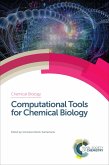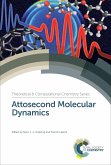Hydrogen bonded systems play an important role in all aspects of science but particularly chemistry and biology. Notably, the helical structure of DNA is heavily reliant on the hydrogens bonds between the DNA base pairs. Although the area of hydrogen bonding is one that is well established, our understanding has continued to develop as the power of both computational and experimental techniques has improved.
Understanding Hydrogen Bonds presents an up-to-date overview of our theoretical and experimental understanding of the hydrogen bond. Well-established and novel approaches are discussed, including quantum theory of 'atoms in molecules' (QTAIM); the electron localization function (ELF) method and Car-Parinnello molecular dynamics; the natural bond orbital (NBO) approach; and X-ray and neutron diffraction and spectroscopy. The mechanism of hydrogen bond formation is described and comparisons are made between hydrogen bonds and other types of interaction. The author also takes a look at new types of interaction that may be classified as hydrogen bonds with a focus on those with multicentre proton acceptors or with multicentre proton donors.
Understanding Hydrogen Bonds is a valuable reference for experimentalists and theoreticians interested in updating their understanding of the types of hydrogen bonds, their role in chemistry and biology, and how they can be studied.
Understanding Hydrogen Bonds presents an up-to-date overview of our theoretical and experimental understanding of the hydrogen bond. Well-established and novel approaches are discussed, including quantum theory of 'atoms in molecules' (QTAIM); the electron localization function (ELF) method and Car-Parinnello molecular dynamics; the natural bond orbital (NBO) approach; and X-ray and neutron diffraction and spectroscopy. The mechanism of hydrogen bond formation is described and comparisons are made between hydrogen bonds and other types of interaction. The author also takes a look at new types of interaction that may be classified as hydrogen bonds with a focus on those with multicentre proton acceptors or with multicentre proton donors.
Understanding Hydrogen Bonds is a valuable reference for experimentalists and theoreticians interested in updating their understanding of the types of hydrogen bonds, their role in chemistry and biology, and how they can be studied.
Dieser Download kann aus rechtlichen Gründen nur mit Rechnungsadresse in A, D ausgeliefert werden.









